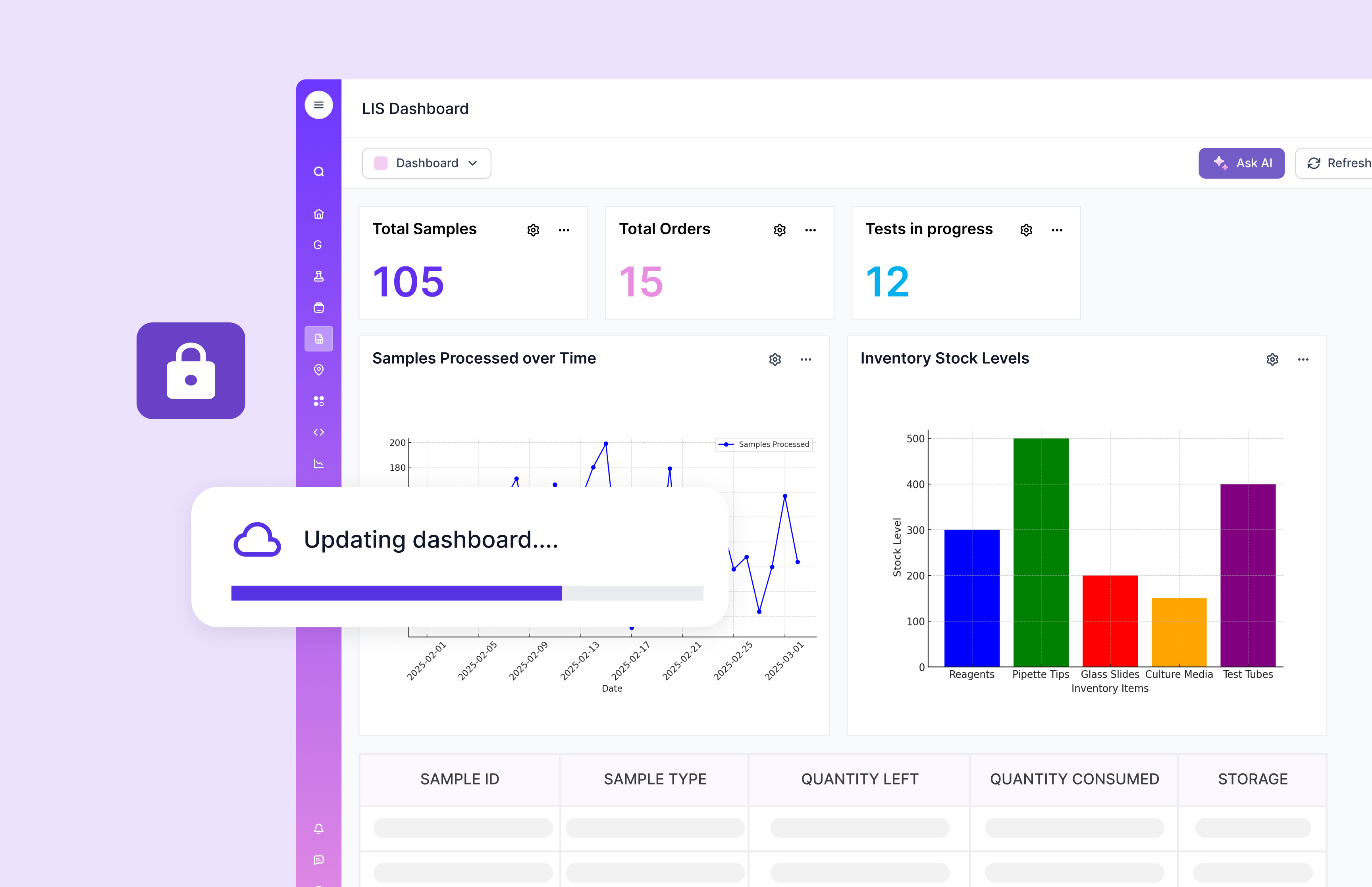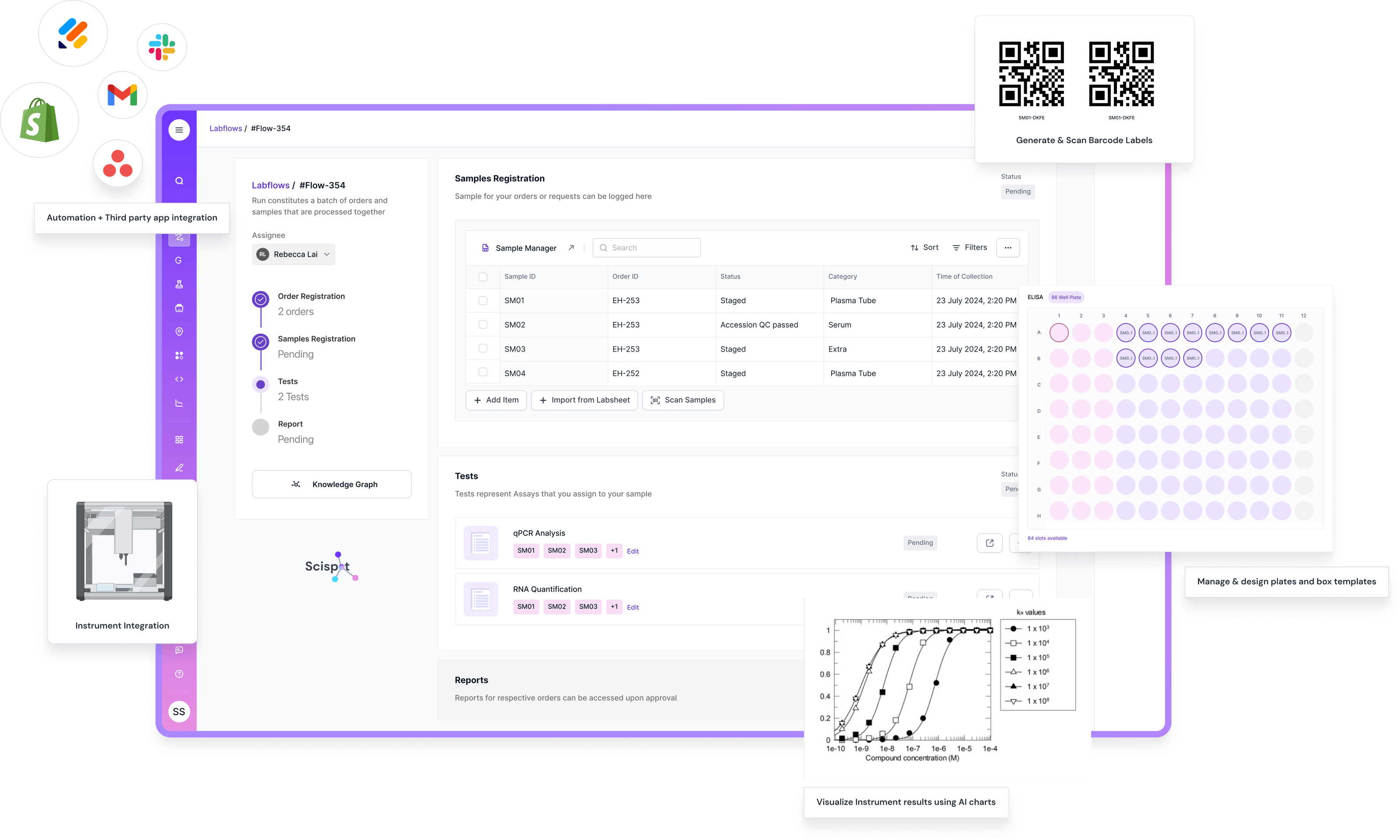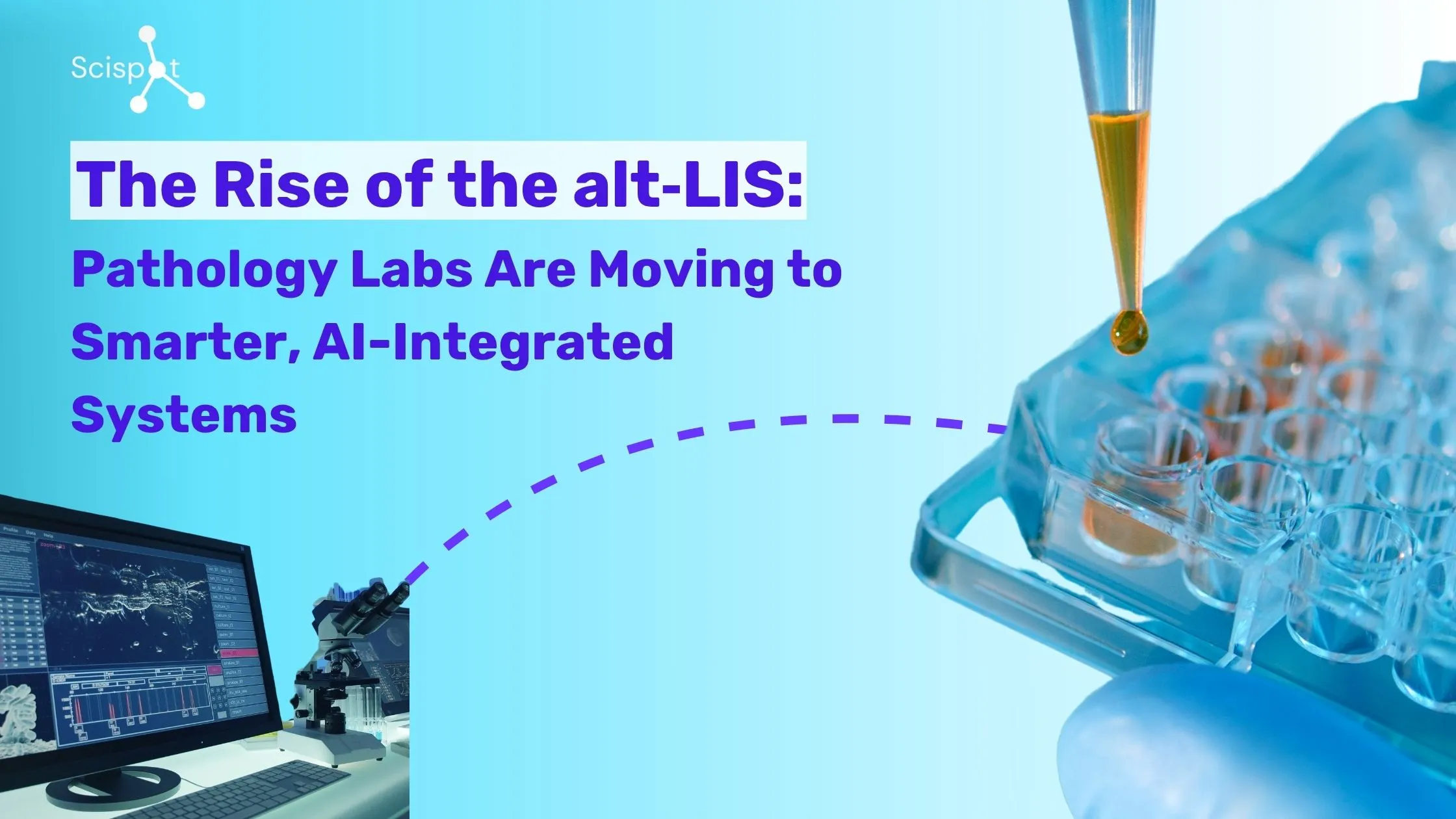Introduction
Pathology labs across the world are undergoing a quiet revolution. What was once a world defined by glass slides, manual reviews, and report-driven software has shifted into a domain dominated by digital imaging, artificial intelligence, and regulatory scrutiny. In this transformation, one thing has become clear: traditional Laboratory Information Systems (LIS), designed primarily for billing, sample tracking, and static reports, are struggling to keep up with the complexity and velocity of modern diagnostic workflows. Enter the alt-LIS — a new generation of laboratory platforms that combine digital pathology, AI integration, and complete traceability into a unified ecosystem. And leading this shift is Scispot, a platform that redefines what a modern LIS should be.

Why Traditional LIS No Longer Work
Legacy LIS platforms were engineered in a different era, where the main objectives were storing test results, generating reports, and processing insurance claims. They were never intended to handle the demands of high-resolution whole-slide imaging, AI-assisted triage, and regulatory compliance, which require clear end-to-end data lineage. As digital pathology became more common and imaging volumes exploded, these systems began to reveal their limitations. Whole-slide images are not just large; they are complex data objects that need precise metadata, annotations, and version control. Classic LIS simply wasn’t designed to treat images, models, and human decision-making as a single, integrated workflow.
Even with plugins or integrations, these systems fall short because they treat AI tools and digital images as add-ons rather than core data entities. The result is workflow friction, lost metadata, and a lack of clarity about who did what, when, and with which model version — a fatal flaw when facing regulators or payers who demand proof, not assumptions.
What Changed in Pathology and Why It Matters Now
Over the past few years, the landscape of pathology has changed dramatically. First, the sheer volume of imaging data has skyrocketed. With the adoption of whole-slide scanners, digital images are becoming routine, and each case can now involve gigabytes of high-resolution slides, annotated regions of interest, and multiple versions of scans. Managing this data requires more than file storage; it demands intelligent structuring, lineage tracking, and auditability.
Second, artificial intelligence has matured from experimental prototypes to production-ready tools. Pre-read algorithms now help triage cases, identify outliers, and reduce reviewer fatigue. But to harness their full potential, labs need platforms that can handle model versioning, structured outputs, and explainability — not just black-box integrations.
Third, payers have become stricter. Labs are being asked not just for results, but for evidence and provenance. What model version was used? What threshold determines triage? Who overrode the AI and why? Without a system that logs and links every step, labs risk reimbursement delays or failed audits.
Lastly, regulators have raised the bar. Compliance is no longer just about lab protocols; it’s about digital transparency. Labs must show who did what, when, using which data and tools. This level of auditability is impossible to maintain manually or with legacy LIS systems.
The alt‑LIS Explained: More Than a Plugin
An alt-LIS is not just a legacy LIS with an AI plugin or digital pathology viewer tacked on. It is a reimagined workflow platform designed for modern diagnostic labs. It treats specimens, slides, regions of interest (ROIs), annotations, AI model runs, human decisions, and reports as structured and interlinked entities. It doesn’t just store outcomes; it records the entire journey that led to those outcomes.
Think of it like an orchestra. In a traditional lab, instruments — like scanners, AI models, and pathologists — often play solo. Each tool operates independently, and the lab tries to stitch the outputs together. But in a lab powered by an alt-LIS, everything follows one unified score. The alt-LIS acts as the conductor, ensuring every note — from sample intake to final report — is timed, tracked, and harmonized.

How a Modern alt‑LIS Workflow Actually Works
In a typical alt-LIS workflow powered by Scispot, everything starts with specimen intake. Unique identifiers are created, sources are recorded, and the chain of custody is established from the very beginning. When slides are created and scanned, metadata such as scanner type, resolution, and timestamp are automatically attached. Once uploaded, the AI model — for instance, "dx_v3" — processes the image or ROI. If the model’s confidence score is above a predefined threshold, the case is routed to a fast-track review queue. If not, it gets escalated to a senior reviewer.
At this stage, the pathologist steps in. They can accept, reject, or modify the AI’s suggestion, and every action is logged with user ID, timestamp, and reason code. Once the human decision is finalized, the system assembles a report that includes the model version, confidence score, any heatmaps or annotations, and references to each step of the process. The final report is digitally signed, time-stamped, and stored in a way that every element — from model version to reviewer action — can be audited.
Data Model and Traceability: Why It’s Non‑Negotiable
A major advantage of an alt-LIS like Scispot is its robust data model. Specimens, slides, ROIs, and annotations are all treated as interconnected objects. Every model run has a name, version, checksum, and data slice attached to it. Each human decision logs the actor’s role, their action, and their rationale. Reports are not static documents but living records with references to every contributing element.
This approach allows labs to answer difficult questions quickly. For example, which cases were touched by a specific version of an AI model? Which slides were escalated due to low confidence? Which reports included rejected AI calls? This level of clarity isn’t just a bonus — it’s essential for validation, regulatory inspection, and payer reimbursement.

Validation and Compliance in a Continuous Workflow
Validation in a digital, AI-integrated lab cannot be a one-time PDF sitting in a drawer. It must be treated as a living, continuous process. Alt-LIS platforms like Scispot allow for model version pinning, which means you can lock specific algorithm versions to individual cases. The system also tracks which datasets were used to validate a model and enforces escalation logic, capturing every override along with justification codes. For labs preparing for audits, evidence packs can be auto-assembled based on predefined templates, removing the chaos of manual documentation.
The Path to Migration: Start Narrow, Then Scale
Switching to an alt-LIS doesn’t require a massive overhaul from day one. The recommended approach is incremental. Begin by choosing a single case type — such as breast IHC — and mapping out the schema from specimen to report. Set up structured intake using tools like Labsheets. Integrate one scanner. Pilot one AI model with defined thresholds. Train pathologists through short, focused sessions. Then go live in a narrow slice of the workflow. Monitor results, refine thresholds, and scale gradually. This path minimizes risk while building trust and familiarity with the new system.

Why Scispot Is the Ideal alt‑LIS
Scispot has emerged as a leader in the alt-LIS space by building a platform specifically for today’s data-driven, image-heavy, AI-enabled labs. It is cloud-based and fully scalable, making it accessible from anywhere while meeting stringent compliance standards like HIPAA, PIPEDA, and CLIA. It comes with native support for AI integrations, digital pathology, and structured workflows, eliminating the patchwork of third-party plugins that plague legacy systems. Scispot's rich API layer allows seamless integration with lab instruments, EMRs, and third-party AI tools, while its built-in automation reduces repetitive tasks like manual data entry or validation steps. In essence, it’s not just an LIS — it’s a complete orchestration platform for modern pathology labs.
Conclusion: The Future Is Structured, Transparent, and AI-Driven
The rise of the alt-LIS is not just a trend — it’s a necessity. Labs that continue to rely on outdated systems will find themselves overwhelmed by data, underpowered by tools, and outpaced by competitors. But those who adopt modern platforms like Scispot will benefit from faster turnaround times, cleaner data pipelines, robust audit trails, and the ability to validate and explain every decision. The alt-LIS is not an add-on or a convenience; it is the foundation of the next generation of pathology.
By treating images, models, and humans as part of one system, the alt-LIS empowers labs to deliver diagnostics that are not only faster and smarter but also accountable and trusted. Scispot gives labs the conductor they need — not just another filing cabinet.






.webp)
.webp)
.webp)



